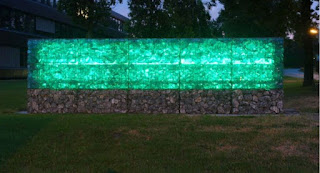GABION : The All You Should Know About
Gabion is an up-and-coming landscape trend that uses wire baskets filled with rocks to create a unique-looking retaining wall. Used for thousands of years all over the world, gabion is now gaining popularity in residential landscaping across world. It’s an attractive, effective, and inexpensive addition to any yard. Find out more about gabion and how to use this ancient technology on your property.
Appearing both modern and rustic at the same time, gabions provide an uncommon way to construct hardscape features in your garden that will last for decades to come. Gabion construction is a method used to build structural elements using rock without mortar.
The term “gabion” comes from an Italian word gabbione which simply means “big cage” Gabions can be made into square boxes, curved walls, pillars and more. Let’s check out some inspired landscape design ideas…
#1. Retaining Walls
Gabion retaining walls are extensively used in civil construction, architecture, and landscaping.
You can construct gabion stone walls by assembling rectangular or square gabion baskets end to end and stacking them together, filling each row with rocks before stacking the next row of cages on top.
#2. Patio and Backyard-Sized Water Features
From a small patio pond to a poolside fountain, endless ideas can be accommodated using gabions.
Gabion style small water feature
#3. Barbecues
Gabion backyard barbeque
There is a pretty good D.I.Y. gabion barbecue article from the D.I.Y. network website if you want to try it for yourself. It’s not the same one pictured above but you can see it here.
#4. Modern Planters
Gabion spherical planters
#5. Privacy Fencing
You might be asking just what the difference between a gabion retaining wall and a gabion fence are. The biggest difference is the method of construction. Since gabion ‘fences’ tend to be thinner, large metal brackets are driven into the ground or set into concrete at the corners to add strength.
With a gabion wall, the foundation and rock-filled baskets are wide enough to hold themselves up without any corner supports.
#6. Decorative Pillars
Gabion pillars are mostly decorative when used in landscaping and create a dramatic vertical focal point.
#7. Fountains
The image below features a fountain made with a small pump and a spillway fountain kit. The copper likely came from a rolled sheet of roofing material purchased from the home center.
#8. Tables & Patio Seating
#9. Raised Beds
Gabion ‘walls’ constructed for a raised bed typically will not need to be very thick since they are low to the ground and have some support once the inside is filled with soil.
#10. Outdoor Fireplace
Gabion construction is fireproof which makes a good choice for outdoor fireplaces for both wood burning and gas.
#11. Mailboxes
Mailboxes made from gabion cages are a unique choice (assuming your neighborhood association would approve it, I doubt mine would).
#12. Outdoor Bar or Kitchen
Gabion cages make a very sturdy base to hold a countertop surface and grill top. Water, electrical, gas, and drain pipes can be hidden within the rocks.
Lighting Gabion Walls
Gabions walls and pillars look dramatic when lit at night, their large stones cast intricate patterns of shadows that you can’t get from cinder blocks or brick walls.
As you can see pictured above, some have taken a different approach by using lights hidden inside a strip of glass rocks layered into the wall. I’m not sure exactly what kind of lights they used since this seems to be a permanent installation. How would they change the bulbs? Not even L.E.D. lights last forever. Maybe the homeowners were okay with just removing the top layer of rocks to change the L.E.D. strip every few years or so.
How To Construct A Gabion Feature
A gabion cage is made with flat steel mesh re-reinforcement panels that are “woven” together with wire ties wrapped around the ends of the wire panels. For landscaping purposes and retaining walls, the cages are filled with rocks and sometimes other materials.
Assembling a gabion cage
If you are building a large gabion feature yourself, the rocks can be purchased through businesses selling landscaping materials such as rocks, dirt and mulch. Most will deliver to your home and sell a variety of shapes and colors.
I am not aware of any nationwide retailers that carry gabion cages but they are widely available online through a google search. Smaller cages that you can stack together to form walls and other features are sold on Amazon, Ebay, and even Etsy, as well as different shapes for making planters.
What Types Of Rocks Are Best For Gabions?
You will need to use rocks that are large enough so that are retained by the steel gabion cage and not slip through the openings. The shape of the rocks you choose is another important consideration. This is because gabions require “jagged” and/or stackable rocks that can lock together without much movement, unlike a smooth, round river type rocks that can move and settle after construction.
For a good example of this, think of a gravel road, they don’t use round pebbles when laying gravel roads because they would move under pressure unlike jagged rocks that will lock together when compacted under the heavy weight of a bulldozer and traffic. The same principle applies to gabions, but with larger rocks.












Comments
Post a Comment